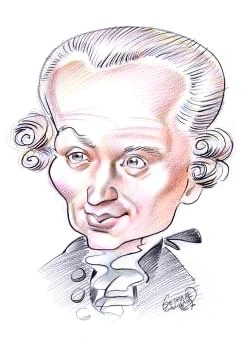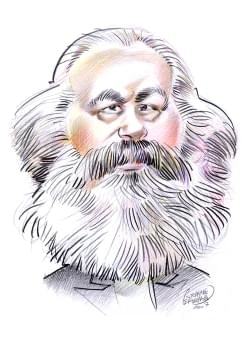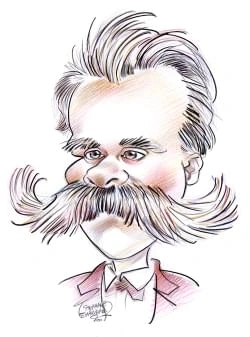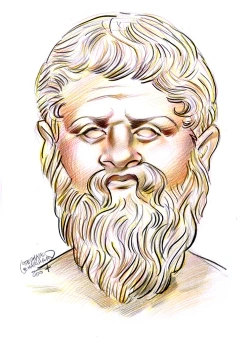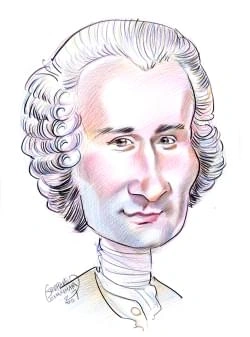786 résultats pour "life"
-
Indiana - USA History.
Michigan in Michigan. There are about 1,000 small natural lakes in Indiana, chiefly in the northern part of the state. The largest is Lake Wawasee, which covers almost 13 sq km (5 sq mi). Inthe central part of the state there are several lakes that were created behind dams on a number of smaller streams. They include Monroe Lake, near Bloomington; Geistand Eagle Creek reservoirs, northeast and northwest of Indianapolis; and Mississinewa and Huntington reservoirs, north of Marion. C Climate Most...
-
Illinois - geography.
the state before joining the Mississippi River at Grafton. The Illinois has been deepened and straightened and forms part of the Illinois Waterway. The watershed between rivers that flow into the Mississippi river system and rivers that flow into the Great Lakes is low and in many places is not easily discernible. Inwhat is now the Chicago area, explorers had little difficulty portaging, or carrying, their canoes over the low watershed between the Des Plaines River, which flows intothe Illinois,...
-
Illinois - USA History.
the state before joining the Mississippi River at Grafton. The Illinois has been deepened and straightened and forms part of the Illinois Waterway. The watershed between rivers that flow into the Mississippi river system and rivers that flow into the Great Lakes is low and in many places is not easily discernible. Inwhat is now the Chicago area, explorers had little difficulty portaging, or carrying, their canoes over the low watershed between the Des Plaines River, which flows intothe Illinois,...
-
Richard Bennett.
that had existed since 1920. He used able people from various government departments to write legislation, to negotiate trade agreements, and to act as economicadvisers. He also built up the political and secret work of the Royal Canadian Mounted Police. A Tariff Policy Bennett's tariff policy combined protection for Canadian farmers and manufacturers and special treatment for nations that were members of the British Commonwealth.In 1932, at a Commonwealth economic conference, a series of agree...
-
Richard Bennett - Canadian History.
that had existed since 1920. He used able people from various government departments to write legislation, to negotiate trade agreements, and to act as economicadvisers. He also built up the political and secret work of the Royal Canadian Mounted Police. A Tariff Policy Bennett's tariff policy combined protection for Canadian farmers and manufacturers and special treatment for nations that were members of the British Commonwealth.In 1932, at a Commonwealth economic conference, a series of agree...
-
Aboriginal Australians - history.
Current archaeological evidence suggests that human occupation of Australia began around 50,000 to 60,000 years ago. The first settlers are believed to havemigrated from Southeast Asia in gradual stages, by way of the islands of Indonesia. Around 50,000 years ago sea levels were as much as 120 m (390 ft) lower thanthey are today, and Australia was joined with New Guinea and Tasmania to form one giant landmass called Sahul, or Greater Australia. Scholars believe that the firstmigrants to Sahul ca...
-
Hippopotamus - biology.
hippo backs up to its droppings and uses its tail as a paddle, flicking the dung through the air. This creates a pile that can become several meters wide over time. Male river hippos start to establish territories when they are in their early 20s, and they may eventually control more than 250 m (820 ft) of the water's edge.Subordinate males come and go freely, but a rival male will spark a confrontation if it tries to intrude. The territory owner and intruder face each other open-mouthedand, if...
-
Cubism
I
INTRODUCTION
Cubism, movement in modern art, especially in painting, invented by Spanish artist Pablo Picasso and French artist Georges Braque in 1907 and 1908.
Mont Sainte-Victoire by CézanneFrench artist Paul Cézanne painted Mont Sainte-Victoire, a mountain near his home in Provence in southern France, onmany occasions. Over time, the images he produced became flatter, less realistic, and more abstract. In this late version,painted from 1902 to 1904, patches of color barely indicate the mountain, sky, and foreground, while creating a rhythmicpattern across the painting’s surface. The mountain and sky, both intensely blue, appear almost to merge.Philad...
-
-
Louis XIV
I
INTRODUCTION
Louis XIV (1638-1715), king of France (1643-1715), known as the Sun King.
he could defend against attack from his enemies. In the first instance, Louis worked to tighten central control over the array of departments, regions, and duchies that together made up France. To this end, he revivedthe use of regional intendants, officials who were sent to the provinces with instructions to establish order and effective royal justice. Although agents of the centralgovernment, intendants worked closely with the local nobility and legal institutions to establish efficient admini...
-
Louis XIV.
he could defend against attack from his enemies. In the first instance, Louis worked to tighten central control over the array of departments, regions, and duchies that together made up France. To this end, he revivedthe use of regional intendants, officials who were sent to the provinces with instructions to establish order and effective royal justice. Although agents of the centralgovernment, intendants worked closely with the local nobility and legal institutions to establish efficient admini...
-
United States (Overview) - country.
parts. IV UNITED STATES PEOPLE When Europeans first reached North America in the 1520s, they encountered other people—Native Americans—and they also encountered a new geography. Someimagined they were entering “a howling wilderness”—an environment filled with exotic flora and fauna but sparsely populated. In reality, they found their way to alandmass that was widely settled. But soon after the Europeans’ arrival, the population of the Americas plummeted, largely because Native Americans lacked...
-
Beetle - biology.
cut, or crush prey. Beetles that consume nectar from flowers use tubelike mouthparts to suck up nectar like a primitive straw. C Thorax The thorax, the body region behind the head, consists of three segments that provide attachments for the legs and wings. Each segment of the thorax carries a pair oflegs. The middle segment also bears the stiff wing sheaths called elytra, and the hind segment holds the membranous hind wings. D Legs Beetles have six jointed legs, each leg with five parts. The f...
-
Estonia - country.
protest the expansion of open-pit phosphorite mining in northeastern Estonia. Their success in stopping the expansion prompted further demonstrations as part of thecountry’s independence movement. Since independence Estonia has taken measures to protect the environment. The government has ratified international agreementsto reduce emissions of hazardous wastes and greenhouse gases, as well as to protect biodiversity, wetlands, and endangered species. Estonians cherish thecountryside, and 31 perc...
-
Tajikistan - country.
by more than 100 percent due to a high birth rate and improvements in medical care. During the early 1990s, however, the growth rate began to decline due to civilwar and emigration. A Ethnic Groups and Languages Tajiks constitute the largest ethnic group in Tajikistan, making up about 65 percent of the population. The peoples who live in Gorno-Badakhshan, located in the Pamirs,are classified as Tajiks, although their languages and customs are distinct. The largest minority group in the country...
-
Whale - biology.
III BEHAVIOR OF WHALES Studies of whales in captivity have taught scientists much about the complex social behavior of whales. Since the late 1980s, advances in the use of satellite trackingsystems have also broadened opportunities for scientists to observe how whales behave in the wild. A Swimming and Diving Whales swim by making powerful up-and-down movements of the tail flukes, which provide thrust. The power comes from body muscles that flex the lower spine upand down in a wavelike motion...
-
Connecticut - geography.
The state’s shoreline, when all the bays and inlets are taken into account, has a total length of 995 km (618 mi). The coastline is deeply indented by long estuaries androcky inlets, and there are many sandy beaches and stretches of tidal marsh. There are several good harbors along the coast, the most important of which is at NewHaven. A few small islands lie offshore in Long Island Sound. D Climate Connecticut has long, hot summers and cold winters. The climate does not vary greatly from place...
-
-
Connecticut - USA History.
The state’s shoreline, when all the bays and inlets are taken into account, has a total length of 995 km (618 mi). The coastline is deeply indented by long estuaries androcky inlets, and there are many sandy beaches and stretches of tidal marsh. There are several good harbors along the coast, the most important of which is at NewHaven. A few small islands lie offshore in Long Island Sound. D Climate Connecticut has long, hot summers and cold winters. The climate does not vary greatly from place...
-
New Hampshire - geography.
Washington. D1 Temperature The coldest parts of the state are in the White Mountains and the extreme north. Average January temperatures range from about -11° C (about 12° F) along theCanadian border to about -3° C (about 26° F) along the coast. July temperatures range from about 17° C (about 63° F) in the mountains to about 21° C (about 70° F)in the south. D2 Precipitation Precipitation is evenly distributed throughout the year over most of the state. However, the higher peaks of the White Mo...
-
New Hampshire - USA History.
Washington. D1 Temperature The coldest parts of the state are in the White Mountains and the extreme north. Average January temperatures range from about -11° C (about 12° F) along theCanadian border to about -3° C (about 26° F) along the coast. July temperatures range from about 17° C (about 63° F) in the mountains to about 21° C (about 70° F)in the south. D2 Precipitation Precipitation is evenly distributed throughout the year over most of the state. However, the higher peaks of the White Mo...
-
Saskatchewan (province) - Geography.
The length of the frost-free season varies within the province. In the southwest, particularly in the valley lands along the South Saskatchewan River, the frost-freeperiod ranges from 150 to 160 days. Regina enjoys about 123 frost-free days, and Saskatoon has about 111. The far north has only from 85 to 95 frost-free days. One important characteristic of Saskatchewan’s climate is the great variability in temperature and precipitation from year to year, which is often critical for agriculture.The...
-
Saskatchewan (province) - Canadian History.
The length of the frost-free season varies within the province. In the southwest, particularly in the valley lands along the South Saskatchewan River, the frost-freeperiod ranges from 150 to 160 days. Regina enjoys about 123 frost-free days, and Saskatoon has about 111. The far north has only from 85 to 95 frost-free days. One important characteristic of Saskatchewan’s climate is the great variability in temperature and precipitation from year to year, which is often critical for agriculture.The...
-
Bosnia and Herzegovina - country.
Serb military campaigns in 1992 and 1993 and Croat campaigns in 1993 and 1995 were aimed at expelling others from areas claimed by these groups. By the end ofthe war almost all non-Serbs had been expelled from Serb-claimed lands in eastern and northern Bosnia, and non-Croats from Croat-claimed lands in southwesternBosnia. In turn, most non-Muslims had left land under Muslim control in northwestern Bosnia. The largest cities had mixed populations in 1991, but the war and its aftermath made them a...
-
Rhode Island - geography.
C (73° F). Along the northern state line, the January mean temperature is about 1° C (about 2° F) colder than in Warwick in January. Along the ocean coast, theJanuary mean temperature is -1° C (30° F). Warm season temperatures are also influenced by the ocean and bay, so temperatures are usually cooler along the coastthan in the interior. The difference tends to be greatest in spring and early summer. Winter temperatures in Rhode Island are usually above -7° C (20° F), buttemperatures colder by...
-
Rhode Island - USA History.
C (73° F). Along the northern state line, the January mean temperature is about 1° C (about 2° F) colder than in Warwick in January. Along the ocean coast, theJanuary mean temperature is -1° C (30° F). Warm season temperatures are also influenced by the ocean and bay, so temperatures are usually cooler along the coastthan in the interior. The difference tends to be greatest in spring and early summer. Winter temperatures in Rhode Island are usually above -7° C (20° F), buttemperatures colder by...
-
-
Switzerland - country.
formation over higher elevations. The wind reverses direction about sundown and moves down the valley as a cool downdraft. The foehn, which occurs during the wintermonths, is a dry and relatively warm airflow that is drawn northward over the Alps. The foehn can quickly melt snow and ice, increasing the risk of mudslides andavalanches. D Natural Resources Waterpower is the chief natural resource of Switzerland. The principal source of water is runoff from the considerable annual precipitation th...
-
Colorado - geography.
Although the rivers of Colorado are navigable only by small boats, they are important as a source of irrigation water for use in Colorado and adjoining states. However,the water level of the rivers fluctuates seasonally and from year to year. The level is generally low in winter and high in spring and summer, during the runoff of meltedsnow from the mountains. Colorado has no large lakes of natural origin, but there are numerous small lakes in the mountains. The largest bodies of water in Colora...
-
Colorado - USA History.
Although the rivers of Colorado are navigable only by small boats, they are important as a source of irrigation water for use in Colorado and adjoining states. However,the water level of the rivers fluctuates seasonally and from year to year. The level is generally low in winter and high in spring and summer, during the runoff of meltedsnow from the mountains. Colorado has no large lakes of natural origin, but there are numerous small lakes in the mountains. The largest bodies of water in Colora...
-
Mississippi - geography.
The climate of Mississippi is characterized by long, hot, and humid summers and generally mild winters. The higher lands in the northeast are usually cooler than otherareas of the state. D1 Temperature Average January temperatures range from about 6° C (about 42° F) in northeastern Mississippi to about 12° C (about 54° F) along the Gulf Coast. No part of the stateis entirely free from freezing temperatures, but prolonged periods of extreme cold rarely occur. Temperatures more than 15° C (30° F)...
-
Mississippi - USA History.
The climate of Mississippi is characterized by long, hot, and humid summers and generally mild winters. The higher lands in the northeast are usually cooler than otherareas of the state. D1 Temperature Average January temperatures range from about 6° C (about 42° F) in northeastern Mississippi to about 12° C (about 54° F) along the Gulf Coast. No part of the stateis entirely free from freezing temperatures, but prolonged periods of extreme cold rarely occur. Temperatures more than 15° C (30° F)...
-
Oklahoma - geography.
portion and the Panhandle are classified as a steppe, where precipitation, typically 250 to 500 mm (10 to 20 in), is the controlling characteristic. January is usually the coldest month with an average of about 3°C (38°F) and extremes from -33°C (-27°F), the lowest ever recorded, to 33°C (92°F). Summer arelong and hot with temperatures in the upper 30°s C (lower 100°s F) common from May until September across the state. The growing season varies from less than 180days in the western Panhandle to...
-
Oklahoma - USA History.
portion and the Panhandle are classified as a steppe, where precipitation, typically 250 to 500 mm (10 to 20 in), is the controlling characteristic. January is usually the coldest month with an average of about 3°C (38°F) and extremes from -33°C (-27°F), the lowest ever recorded, to 33°C (92°F). Summer arelong and hot with temperatures in the upper 30°s C (lower 100°s F) common from May until September across the state. The growing season varies from less than 180days in the western Panhandle to...
-
South Carolina - geography.
(20° F) or lower, occur each winter. July temperatures average 27° C (80° F) in most of the state, with temperatures in the lower 20°s C (lower 70°s F) in themountains. Except in the mountains, summer daytime highs throughout South Carolina often enter the lower 30°s C (lower 90°s F). The temperature in July in Columbiaranges from 21° to 33° C (70° to 92° F). D2 Precipitation Central South Carolina has an average annual precipitation (both rainfall and snowfall) of 1,140 mm (45 in). Greater amo...
-
-
South Carolina - USA History.
(20° F) or lower, occur each winter. July temperatures average 27° C (80° F) in most of the state, with temperatures in the lower 20°s C (lower 70°s F) in themountains. Except in the mountains, summer daytime highs throughout South Carolina often enter the lower 30°s C (lower 90°s F). The temperature in July in Columbiaranges from 21° to 33° C (70° to 92° F). D2 Precipitation Central South Carolina has an average annual precipitation (both rainfall and snowfall) of 1,140 mm (45 in). Greater amo...
-
Franklin D.
Roosevelt entrusted his campaign management to the journalist Louis McHenry Howe. Howe, a genius at politics, performed brilliantly. Henceforth, Roosevelt and Howewere to be almost inseparable, and Howe, a wizened and colorful little man, guided the political fortunes of the Hyde Park aristocrat. B Assistant Secretary of the Navy Even before his reelection to the New York legislature, Roosevelt had entered the national political arena by taking part in the campaign of Governor Woodrow Wilson of...
-
Franklin D.
Roosevelt entrusted his campaign management to the journalist Louis McHenry Howe. Howe, a genius at politics, performed brilliantly. Henceforth, Roosevelt and Howewere to be almost inseparable, and Howe, a wizened and colorful little man, guided the political fortunes of the Hyde Park aristocrat. B Assistant Secretary of the Navy Even before his reelection to the New York legislature, Roosevelt had entered the national political arena by taking part in the campaign of Governor Woodrow Wilson of...
-
Minnesota - geography.
C Climate Minnesota’s climate is classified as humid continental because normally there is a sufficient amount of precipitation to provide at least some surplus for runoff, andbecause Minnesota’s temperature conditions are largely controlled by its location in the interior of the large landmass of North America. The result is extreme seasonaltemperature variations. The average January temperature is about -18°C (about 0°F) in the northwest and about -10°C (about 14°F) in the south, but thetherm...
-
Minnesota - USA History.
C Climate Minnesota’s climate is classified as humid continental because normally there is a sufficient amount of precipitation to provide at least some surplus for runoff, andbecause Minnesota’s temperature conditions are largely controlled by its location in the interior of the large landmass of North America. The result is extreme seasonaltemperature variations. The average January temperature is about -18°C (about 0°F) in the northwest and about -10°C (about 14°F) in the south, but thetherm...
-
Texas - geography.
D Climate Eastern Texas has a humid subtropical climate, while a semiarid low latitude climate prevails in central areas, and an arid low latitude climate in the extreme west. Alongthe coast the climate is much milder, with fewer extremes in temperatures. Hurricanes sometimes hit the coastal areas of Texas from late July through September, andtornadoes are common in north-central Texas in April and May. D1 Temperature Summers are hot throughout the state, and temperatures exceeding 35°C (95°F)...
-
Texas - USA History.
D Climate Eastern Texas has a humid subtropical climate, while a semiarid low latitude climate prevails in central areas, and an arid low latitude climate in the extreme west. Alongthe coast the climate is much milder, with fewer extremes in temperatures. Hurricanes sometimes hit the coastal areas of Texas from late July through September, andtornadoes are common in north-central Texas in April and May. D1 Temperature Summers are hot throughout the state, and temperatures exceeding 35°C (95°F)...
-
Arizona - geography.
of the Mogollon Rim, the Little Colorado draws very little water from a relatively large watershed, usually containing a mere trickle of water in its riverbed. The ColoradoRiver’s principal tributary is the Gila River, which flows all the way across the southern part of the state from New Mexico to the California border. From the mountainsand plateaus of central Arizona, the Gila River receives the Salt, Agua Fria, and Hassayampa rivers. The Salt River is itself fed by the Verde River. The Gila...
-
-
Arizona - USA History.
of the Mogollon Rim, the Little Colorado draws very little water from a relatively large watershed, usually containing a mere trickle of water in its riverbed. The ColoradoRiver’s principal tributary is the Gila River, which flows all the way across the southern part of the state from New Mexico to the California border. From the mountainsand plateaus of central Arizona, the Gila River receives the Salt, Agua Fria, and Hassayampa rivers. The Salt River is itself fed by the Verde River. The Gila...
-
Vocabulary about education
life in the classroom: la vie de classe
to
a school trip = un voyage scolaire a lesson = un cours a period = une heure de cours breaktime = la récréation the lunch break = la pause déjeuner to invigilate = surveiller assembly = l'assemblée (chaque matin, dans les écoles britanniques, tous les élèves de l'école se rassemblent dans le grand hall pour assister à l'assemblée) to cheat = tricher to put one's hand up = lever la main maternity leave = congé de maternité a supply teacher = un professeur remplaçant to cover a lesson = remplacer u...
-
Geography essay: Why are some countries more developed than others ?
money just to pay off their debts, they are not able to constructs as many schools, hospitals, water supplies orwhat people people urgently need.LEDC's are generally situated where the environmental conditions are at of the Earth's extreme climates (e.g:equator very humid tornadoes, deserts famine and dry soil). The lack of money and technology enables them tocope with hazard such as hurricanes, such as the one that occurred in Haiti, and cause billions of dollars of damage.Countries st...
- VIE DE SAMUEL JOHNSON [The Life of Samuel Johnson]. (résumé & analyse de l’oeuvre)
- VIE DE SAMUEL JOHNSON [The Life of Samuel Johnson]. (résumé & analyse de l’oeuvre)
-
Commentaire : "The darkling Trush"
Secondly, the w riter m ade specious choices of im agery through the beginning of his poem in order to create an apocalyptic atm osphere. Thus, the reader pictures a frozen earth decaying w here life is increasingly rare just like in the “Snow piercer”. For exam ple, in the first stanza, “Frost” is com pared w ith a “spectre-gray” w hich sets a gloom y atm osphere. Besides, m aybe that using the w ord “Frost”, the w riter m akes allusion to G reek god w ho controls the w eather. So this...
-
Ideology and Rationality in the History of the Life Sciences
Ideology and Rationality in the History of the Life Sciences Extrait automatique Georges Canguilhem translated by Arthur Goldhammer The MIT Press Cambridge, Massachusetts London, .England --� 068182 English translation copyright© 1988 Massachusetts Institute of Technology Originally published under the title Ideologie et rationalite dans l'histoire des sciences de la vie: Nouvelles etudes d'histoire et de philosophie des sciences, copyright© 1977 Librairie Philoso...
- MÉMOIRES de Barnum [ The Life of P.T. Barnum written by himself ] - résumé, analyse
-
-
Monkey (animal) - biology.
traveling in troops, often take turns acting as sentinel, making specific alarm calls to alert their companions to approaching danger. In trees, monkeys have other waysof outwitting their enemies. Capuchins, for example, sometimes fend off inquisitive predators by urinating on them from high above or by jumping up and down tomake dead branches fall on the predators. Most monkeys can breed at any time of the year, so their troops often contain young of many different ages. Courtship is typically...
-
Depression (psychology).
IV CAUSES Some depressions seem to come out of the blue, even when things are going well. Others seem to have an obvious cause: a marital conflict, financial difficulty, or somepersonal failure. Yet many people with these problems do not become deeply depressed. Most psychologists believe depression results from an interaction betweenstressful life events and a person’s biological and psychological vulnerabilities. A Biological Factors Depression runs in families. By studying twins, researche...
}})


